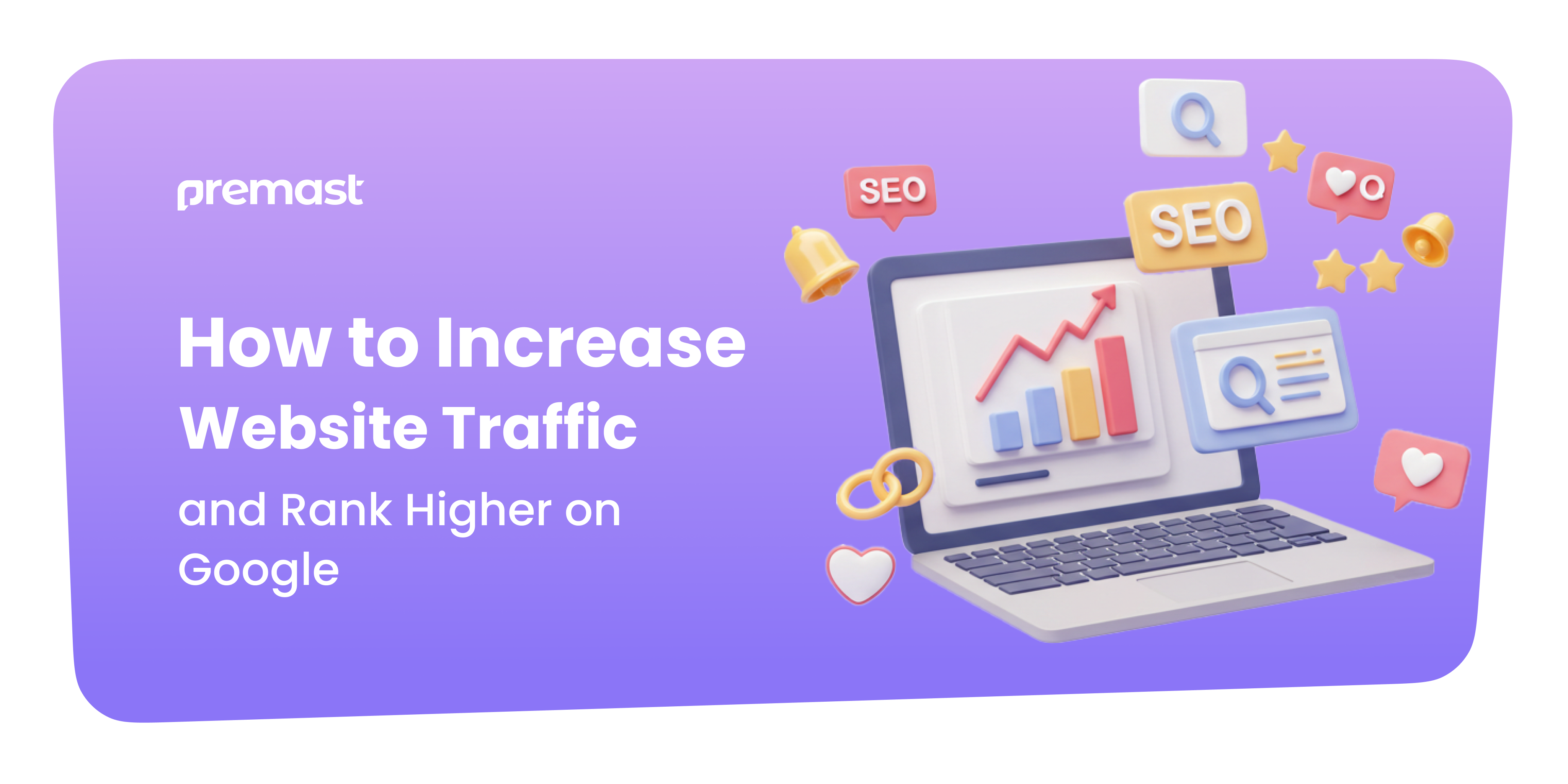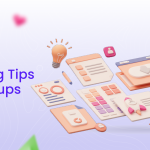Guides
How to Increase Website Traffic and Rank Higher on Google

Building steady organic traffic is like giving your website a long-lasting, renewable energy source. Instead of constantly spending money on ads, organic traffic brings in visitors naturally, day after day, month after month. It’s one of the most sustainable ways to grow your online presence and build trust with your audience.
But here’s the big question: how do you climb the search engine rankings and keep that valuable traffic coming in? The truth is, it’s not just about plugging in the right keywords. Successful SEO involves a mix of smart content strategy, technical optimization, user experience, and a deep understanding of what your audience is truly searching for. So if you’re serious about boosting visibility and building long-term website growth, it’s time to think beyond just keywords and focus on delivering real value.
In this easy-to-follow guide, we’ll share helpful tips and proven strategies to increase your organic traffic and build real, lasting connections with your visitors. Let’s dive in and start boosting your search rankings while growing a strong, engaging online presence.
Smart Ways to Grow Your Organic Traffic
There isn’t just one magic trick to boosting organic traffic; it’s all about combining the right strategies that work well together. Whether you’re just starting out or looking to improve your current SEO game, we’ve got you covered.
Begin by exploring the SEO Audit Checklist to spot what might be holding your site back and strengthen your SEO foundation. If you’ve recently launched a new website, our SEO Tips to Boost Your New Website’s Rankings will give you a solid head start.
Create Original, Valuable Content That Matches User Intent
Want your content to rank well on search engines? It all starts with quality. Great SEO isn’t just about keywords, it’s about giving people exactly what they’re looking for. Search engines like Google are designed to connect users with helpful, relevant, and original content. That’s why understanding and meeting user intent is key.
According to Google’s guidelines on creating people-first content, the more closely your content aligns with what users want, the better your chances of ranking. Think about it: what are your visitors hoping to find? Are they looking to learn something new, compare options, or make a purchase? Your content should directly answer these needs and go beyond surface-level information. For example, if someone is searching for information, a well-written guide or detailed how-to article can be incredibly effective. If they’re further along the buying journey, comparison posts, product reviews, or case studies might be more useful.
Want to keep your visitors engaged and coming back for more? Try mixing up your content with fun and interactive formats like infographics, videos, and tools. These not only make your site more exciting and easier to understand for different learning styles, but they also help boost important SEO metrics, like keeping people on your site longer and reducing bounce rates. Search engines love that.
Earn trusted backlinks from reputable websites
When well-known websites link to your content, it’s like getting a vote of confidence. These quality backlinks show search engines that your site is reliable and authoritative. As a result, your rankings can improve, bringing in more organic traffic naturally.”
Smart Ways to Earn High-Quality Backlinks
If you want to boost your website’s SEO and build authority, getting high-quality backlinks is key. Here are a couple of effective (and friendly) strategies to help you get started:
1. Write Guest Posts for Industry Blogs
Sharing your expertise through guest blogging is a great way to reach a wider audience. By contributing to respected websites in your niche, you can provide helpful insights and include a link back to your own content. This not only drives traffic but also builds your site’s credibility in the eyes of search engines.
2. Fix Broken Links with Your Content
Broken link building is a win-win tactic. Find broken links on relevant websites and offer your own content as a replacement. The site owner fixes their dead link, and you earn a valuable backlink in return. Tools like Moz’s Link Explorer or Majestic can make this process easier by helping you spot these opportunities.
Focus on Quality Over Quantity
Not all backlinks are created equal. A few links from trusted, relevant sources are far more powerful than dozens from low-quality sites. That’s why it’s better to prioritize backlinks from authoritative websites in your field rather than chasing high numbers.
Use Smart, Specific Keywords That Attract the Right Visitors
Instead of going after broad keywords that everyone’s competing for, focus on long-tail keywords, those more specific phrases that speak directly to what your audience is looking for. While they may have lower search volume, they tend to attract people who are truly interested and ready to take action.
For example, rather than aiming for a general term like “branding services,” try something more targeted like “branding services for tech companies” or “branding services for SaaS businesses.” These niche keywords help your content stand out and rank higher in search results, bringing in visitors who are more likely to engage with your brand.
To discover the right long-tail keywords, try using helpful tools like Ahrefs or Serpstat to learn what your audience is searching for. And here’s a tip: don’t overlook voice search! With more people using smart devices, searches are becoming more conversational, think phrases like “How do I optimize my content for SEO?” instead of short keywords. By focusing on these natural, question-style keywords, you can attract more targeted traffic to your site.
Keep Your Website Active with Fresh Content
Publishing new, high-quality content regularly helps your website stay visible and grow. Search engines love fresh updates, and so do your visitors! Regular posts can boost your rankings and bring in more organic traffic. On the flip side, going quiet for too long might cause your site to lose traction.
Why Does This Matter for SEO? Search engines love websites that stay fresh and active. When you regularly share new blog posts, articles, or helpful resources, your site is more likely to be crawled often, and that can lead to better rankings. Plus, it keeps your readers engaged! If your audience knows they can count on you for valuable, up-to-date content, they’re more likely to return again and again.
To make the most of your efforts, it’s important to follow a clear content strategy. Not sure where to start? Check out our guide: How to Create an Effective SEO Content Strategy, it’s packed with practical tips. Another smart move is to set up a content calendar. You don’t need to post daily; what matters most is consistency. Whether it’s weekly, bi-weekly, or monthly, a steady schedule helps build trust with both your audience and search engines.
Keep Your Content Fresh and Relevant
Staying consistent also means showing your older posts some love. What mattered last year might not be as useful today, especially when it comes to search engines, which favor fresh, accurate content. If you’ve got blog posts that are starting to feel a bit outdated, take some time to update them with new insights or data. A quick refresh can boost your rankings and keep your readers engaged.
Give your content a fresh boost by updating stats, adding new insights, and fixing outdated info. Not only does this make your content more relevant, but it also helps breathe new life into it, without the stress of creating something brand new every day. In fact, refreshing old content can be just as powerful for boosting traffic. Once you’ve updated it, spread the word! Share your refreshed content on social media, include it in your email newsletters, and let your audience know it’s worth another look. You’ll likely see a spike in engagement and reach.
How to Get Featured in Rich Snippets
Have you seen search results that show extra details like star ratings, images, or bullet points? Those are called rich snippets, and they’re a great way to grab attention and boost your visibility on Google.
To improve your chances of showing up in rich snippets, make sure your content is easy for search engines to understand. Use clear formatting like bullet points, numbered lists, and tables where it makes sense. Also, don’t forget to add schema markup to your pages, this helps search engines better read and display your content in a more eye-catching way.
Let’s say you’re sharing a recipe make it easy to follow with clear, step-by-step instructions. If you’re answering a popular question, be sure to give a straightforward and helpful response. This makes your content more appealing to both readers and search engines, helping it stand out from the rest. Tools like Yoast can be a big help in getting everything just right.
Boost Your Visibility with Schema Markup
Want to stand out in search results? Schema markup is a powerful tool that helps search engines better understand your website’s content. By adding it, you can enhance how your pages appear in search, showing helpful details like product prices, event dates, star ratings, and more.
These eye-catching extras can make your listings more appealing, which often leads to more clicks and more clicks mean more traffic. Schema (or structured data) can also help your content appear in rich results like featured snippets and knowledge panels, giving your site even greater visibility. If you haven’t set it up yet, don’t worry, it’s easier than it sounds. Tools like Google’s Structured Data Markup Helper make the process simple, even for beginners.
Improve Your Site’s Navigation with Smart Internal Linking
Internal linking connecting different pages within your website, might not seem exciting, but it’s a game-changer. It helps search engines understand your site structure and index your content more effectively. Plus, it keeps visitors engaged by guiding them to helpful, related pages, improving both user experience and SEO.
Here’s a simple example: If you’re writing a blog post about SEO strategies, it’s a great idea to link to other related content you’ve already published like a post on keyword research or link-building tips. Doing this not only helps improve your site’s SEO but also creates a smoother, more helpful experience for your readers. It keeps visitors engaged and makes it easy for them to explore more of the topics they care about.
When adding internal links, make sure to use clear and descriptive anchor text. Instead of something generic like “click here,” let your readers know exactly what they’ll find, like “learn how to do keyword research” or “see our guide to link building.” This helps both your audience and search engines understand your content better.
Fix Broken Pages and Set Up Smart Redirects
Broken links and 404 error pages can be frustrating for your visitors, and they’re not great for SEO either. When someone lands on a dead-end page, they’re likely to leave right away, which can increase your bounce rate and hurt your search rankings over time.
The good news? It’s easy to stay on top of this. Make it a habit to audit your website for broken pages regularly. Once you find one, set up a 301 redirect to a relevant, working page. This not only keeps your visitors on track but also passes along any SEO value the original page had, helping to maintain your site’s authority.
If you’re not familiar with the technical side of websites, fixing broken links and error pages can feel overwhelming and might even lead to more issues. To make sure everything is handled the right way and avoid extra headaches, it’s a smart idea to team up with technical SEO experts. These professionals know how to quickly find and fix problems, keeping your website running smoothly and search engine friendly.
How to Write Better Web Page Titles for SEO and Engagement
Your page title is often the first thing both people and search engines notice, so make it count! A great title should include your main keywords and clearly explain what the page is about.
For example, instead of a vague title like “Marketing Strategies,” try something more specific and engaging, like “5 Powerful Marketing Tactics to Boost Your Business Growth.” This not only tells readers what they’ll get but also includes strong keywords that help with search rankings.
Aim to keep titles short and sweet, ideally between 50–60 characters, so they show up fully in search results. And remember, being honest matters. Avoid clickbait titles. If your content doesn’t match the promise of your headline, visitors may leave quickly, which can hurt your SEO performance.
Boost Your Brand Visibility with YouTube Content
YouTube is one of the most powerful platforms to connect with a wide audience and grow your brand. By sharing engaging videos like how-tos, tutorials, or product demos, you can not only educate and entertain but also drive valuable traffic back to your website.
To get the most out of your YouTube content, be sure to add links to your website in the video description and guide viewers to targeted landing pages. Don’t forget to include relevant keywords in your titles, descriptions, and tags to improve your video rankings on both YouTube and Google search results.
Share Your Web Pages on Social Media to Boost Traffic
Social media is a powerful tool to spread the word about your content and drive more visitors to your website. Platforms like Facebook, Instagram, LinkedIn, and X (formerly Twitter) offer excellent opportunities to connect with a wider audience.
Tailor your posts for each platform to get the best results. For example, Pinterest and Instagram are great for sharing eye-catching images, while LinkedIn is ideal for thoughtful articles and professional updates. Don’t forget to include relevant hashtags; they help increase your content’s reach and attract new followers interested in your niche.
Connect with your audience by joining conversations, sharing your posts again for those who may have missed them, and staying active in your community. Hosting fun contests or giveaways is also a great way to boost visibility and drive more traffic to your content.
Create Blogs to Grow Your Audience
If you don’t have a blog yet, now’s the perfect time to start one. A blog is a powerful and proven way to attract visitors, connect with your audience, and build trust in your niche.
Blogging allows you to target long-tail keywords, share helpful tips, and showcase your expertise. It’s also a great way to encourage interaction; readers can leave comments, share your posts on social media, and even subscribe to your email list. By consistently publishing valuable content, you can grow a loyal community and drive more traffic to your website or platform.
Here’s the truth: blogging can be a powerful way to grow your traffic, but it works best when you’re consistent and intentional. Focus on creating helpful, well-researched content that’s optimized for the right keywords. It might take a little time to see results, but with patience and the right strategy, your blog can turn into a steady stream of organic traffic.
Why It’s Important to Monitor Your Organic Search Traffic (and How to Do It)
To grow your website and boost its visibility, having the right strategies in place is just the beginning; it’s just as important to know whether those strategies are actually working. That’s where tools like Google Analytics 4 (GA4) come in. GA4 gives you powerful insights into how visitors interact with your site, helping you track performance, understand user behavior, and make smart decisions to improve your organic search traffic.
When it comes to measuring your website’s performance, organic traffic is one of the most important metrics to keep an eye on. It tells you how many visitors are finding your site through search engines, giving you a clear picture of how effective your SEO efforts really are. If your organic traffic is on the low side, it might be time to revisit your keyword strategy or adjust your content approach.
Other key metrics include bounce rate and average session duration. A high bounce rate usually means visitors are leaving after viewing just one page, possibly because the content didn’t match their expectations or wasn’t engaging enough. Meanwhile, short session durations can highlight pages where users lose interest quickly. Both metrics can help you identify areas where you may need to improve page speed, enhance content quality, or simplify site navigation to keep users exploring your site longer.
For even deeper insights, tools like heatmaps and session recordings are incredibly helpful. Heatmaps show you exactly where users click and scroll, helping you understand what grabs their attention. Session recordings, on the other hand, let you watch real user journeys through your site, making it easier to spot and fix usability issues.
Conclusion
Boosting your organic traffic and climbing up the search rankings doesn’t happen overnight, but with the right strategies, it’s doable. These 13 proven tips will help you build a strong, lasting online presence that draws in your ideal audience. As search engines and user habits evolve, staying adaptable and focused on what’s working is key to long-term success.
Let’s visit Premast to download free PowerPoint templates. You can also visit Premast Blog to keep up-to-date with new templates and get design tips from our PowerPoint experts!
Leave a Reply
You must be logged in to post a comment.









Leave a Reply
You must be logged in to post a comment.